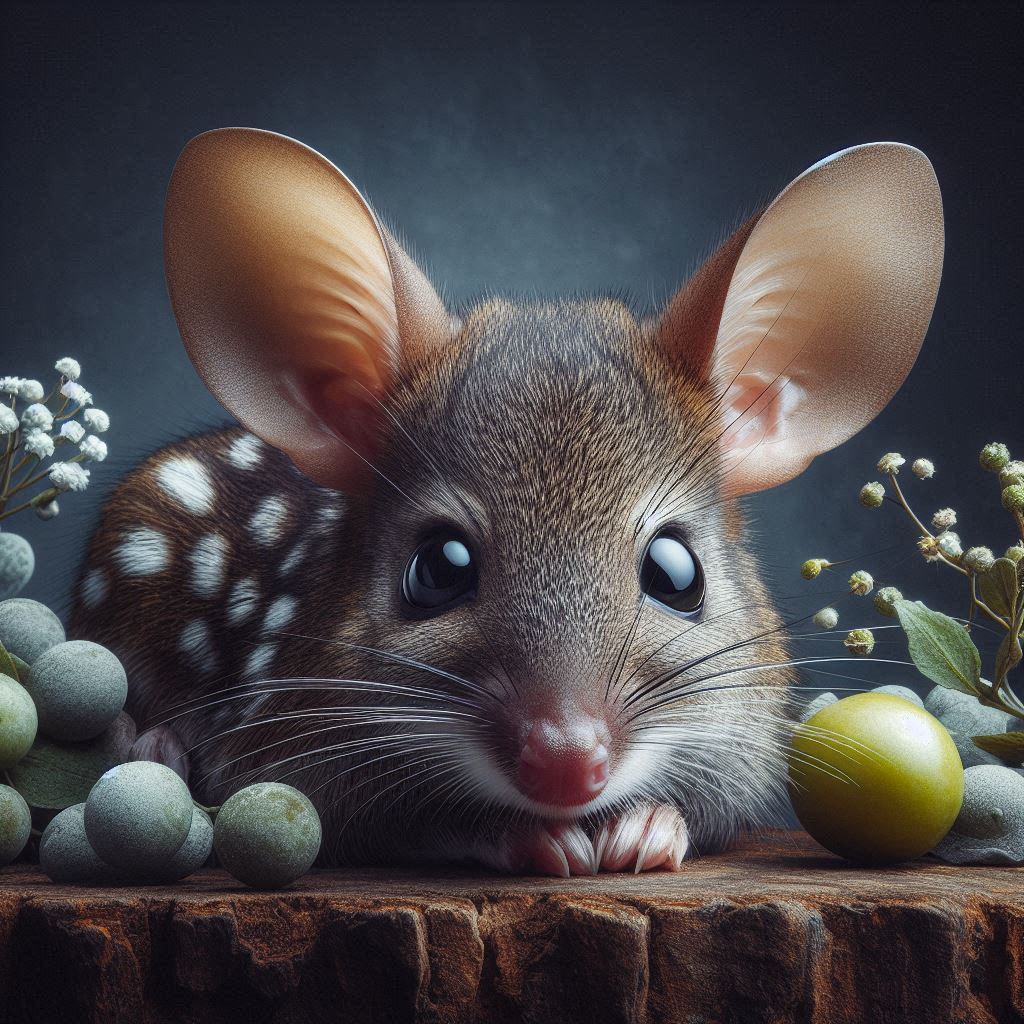The Philippine mouse deer, scientifically known as Tragulus nigricans, is a fascinating creature that holds the distinction of being the world’s smallest hoofed mammal. This diminutive ungulate, native to the Philippines, captivates researchers and wildlife enthusiasts alike with its unique characteristics and ecological significance. In this comprehensive blog post, we will delve into the various aspects of the Philippine mouse deer, exploring its biology, habitat, behavior, conservation status, and the challenges it faces in the modern world. By understanding this remarkable species, we can better appreciate the biodiversity of the Philippine archipelago and the importance of preserving such rare and vulnerable animals.
Taxonomy and Classification
The Philippine mouse deer belongs to the family Tragulidae, which includes other species of mouse deer found in Southeast Asia and parts of Africa. Despite its common name, the mouse deer is not actually a deer, nor is it closely related to mice. Instead, it belongs to a distinct group of primitive ungulates that diverged from other hoofed mammals early in their evolutionary history.
Scientific Classification:
| Rank | Classification |
|---|---|
| Kingdom | Animalia |
| Phylum | Chordata |
| Class | Mammalia |
| Order | Artiodactyla |
| Family | Tragulidae |
| Genus | Tragulus |
| Species | T. nigricans |
The Philippine mouse deer is sometimes referred to as the Balabac chevrotain, named after the island of Balabac where it was first discovered. It is important to note that while there are several species of mouse deer in Southeast Asia, the Philippine mouse deer is endemic to the Philippines and is considered a distinct species.
Physical Characteristics
The Philippine mouse deer is renowned for its diminutive size, making it a true marvel of nature. Adults typically measure between 40 to 50 centimeters (16 to 20 inches) in length and stand at a shoulder height of approximately 20 centimeters (8 inches). Their weight ranges from 1 to 2 kilograms (2.2 to 4.4 pounds), with females generally being slightly larger than males. This small stature allows them to navigate through dense undergrowth and avoid predators with remarkable agility.
Key Physical Features:
- Coat: The Philippine mouse deer has a sleek, reddish-brown coat with a white underside. This coloration provides excellent camouflage in its forest habitat.
- Head: They possess a distinctive pointed snout and large, dark eyes that give them an alert and delicate appearance.
- Legs: Their legs are slender and end in small, cloven hooves. The hind legs are noticeably longer than the forelegs, an adaptation that aids in quick, bounding movements.
- Tusks: Male Philippine mouse deer have small, protruding upper canine teeth or “tusks” that are used in territorial disputes and courtship rituals.
- Tail: A short, fluffy tail completes their compact body structure.
One of the most intriguing aspects of the Philippine mouse deer’s anatomy is the absence of antlers or horns, which are common features in many other hoofed mammals. This characteristic sets them apart from true deer species and contributes to their unique evolutionary position.
Habitat and Distribution
The Philippine mouse deer is endemic to the Philippines, with its distribution limited to a few islands in the southwestern part of the archipelago. The species is primarily found on the island of Balabac, after which it derives one of its common names. Additionally, populations have been recorded on the nearby islands of Bugsuk and Ramos.
Habitat Preferences:
- Dense tropical and subtropical moist lowland forests
- Secondary growth forests with thick understory vegetation
- Areas near water sources such as streams and rivers
- Coastal forests and mangrove swamps
The specific habitat requirements of the Philippine mouse deer highlight the importance of preserving diverse forest ecosystems in the Philippines. These animals thrive in environments with ample ground cover, which provides both food sources and protection from predators.
Behavior and Ecology
The Philippine mouse deer exhibits fascinating behavioral patterns that have evolved to suit its small size and vulnerable position in the ecosystem. These adaptations play a crucial role in the species’ survival and reproductive success.
Activity Patterns:
The Philippine mouse deer is primarily nocturnal, with peak activity occurring during the twilight hours of dawn and dusk. This behavior helps them avoid daytime predators and take advantage of the cooler temperatures for foraging. During the day, they typically rest in well-concealed spots among dense vegetation.
Social Structure:
Unlike many hoofed mammals that form herds, the Philippine mouse deer is largely solitary. Adults maintain individual territories, which they mark using scent glands located near their eyes and on their chins. These scent markings serve to communicate with other mouse deer and establish territorial boundaries.
Diet and Foraging:
The Philippine mouse deer is an herbivore with a diverse diet that includes:
- Leaves and shoots of various plants
- Fallen fruits
- Fungi
- Flowers and buds
Their small size allows them to subsist on relatively little food, and they have adapted to extract maximum nutrition from their plant-based diet. The species plays an important role in seed dispersal within its habitat, contributing to forest regeneration and maintenance of biodiversity.
Reproductive Behavior:
The reproductive biology of the Philippine mouse deer is characterized by several unique features:
- Females typically give birth to a single offspring, known as a fawn
- Gestation period lasts approximately 140-160 days
- Fawns are precocial, born fully furred and able to stand within an hour of birth
- Weaning occurs at around 2-3 months of age
- Sexual maturity is reached at about 5-6 months for females and 7-8 months for males
This reproductive strategy, with its emphasis on producing few but well-developed offspring, is an adaptation to the species’ small size and the challenges of survival in a complex forest ecosystem.
Conservation Status and Threats
The Philippine mouse deer faces numerous challenges in the wild, leading to concerns about its long-term survival. The International Union for Conservation of Nature (IUCN) has listed the species as “Endangered” on its Red List of Threatened Species.
Current Population Status:
While exact population numbers are difficult to determine due to the species’ elusive nature and limited range, experts estimate that there are fewer than 2,500 mature individuals remaining in the wild. This small population size makes the Philippine mouse deer particularly vulnerable to extinction.
Major Threats:
- Habitat Loss: Deforestation and land conversion for agriculture and human settlements have significantly reduced the available habitat for the Philippine mouse deer.
- Hunting: Despite legal protections, illegal hunting for meat and the pet trade continues to impact population numbers.
- Predation: Introduction of non-native predators, such as feral dogs and cats, has increased pressure on mouse deer populations.
- Climate Change: Alterations in temperature and rainfall patterns may affect the availability of food sources and suitable habitat.
- Small Population Size: Limited genetic diversity within the remaining population increases vulnerability to diseases and environmental changes.
The following graph illustrates the estimated population decline of the Philippine mouse deer over the past few decades:
Population Estimate
^
|
| 5000 + *
| | *
| 4000 + *
| | *
| 3000 + *
| | *
| 2000 + *
| | *
| 1000 + *
| | *
| 0 +----+----+----+----+----+----+----+
1970 1980 1990 2000 2010 2020 2030
YearConservation Efforts
Recognizing the precarious status of the Philippine mouse deer, various conservation initiatives have been implemented to protect the species and its habitat. These efforts involve collaboration between government agencies, non-governmental organizations, and local communities.
Protected Areas:
The establishment of protected areas has been a key strategy in safeguarding the remaining habitat of the Philippine mouse deer. Notable protected areas include:
- Balabac Island Protected Landscape and Seascape
- Bugsuk Island Wildlife Sanctuary
These protected areas aim to preserve not only the mouse deer but also the diverse ecosystems that support a wide range of flora and fauna.
Captive Breeding Programs:
To bolster wild populations and maintain genetic diversity, captive breeding programs have been initiated. These programs face challenges due to the species’ specific habitat requirements and sensitive nature, but they represent an important component of conservation efforts.
Research and Monitoring:
Ongoing scientific studies focus on:
- Population dynamics and distribution
- Habitat preferences and resource utilization
- Genetic diversity and health of wild populations
- Impacts of climate change on the species and its habitat
This research provides valuable insights that inform conservation strategies and management decisions.
Community Engagement:
Engaging local communities in conservation efforts is crucial for the long-term protection of the Philippine mouse deer. Initiatives include:
- Environmental education programs
- Alternative livelihood projects to reduce dependence on forest resources
- Training of local rangers and wildlife monitors
By involving local stakeholders, conservation efforts can address both ecological and socio-economic factors that impact the species’ survival.
Ecological Importance
The Philippine mouse deer plays a vital role in its ecosystem, contributing to the overall health and biodiversity of the forests it inhabits. Understanding these ecological functions underscores the importance of protecting this unique species.
Seed Dispersal:
As frugivores, Philippine mouse deer consume a variety of fruits and subsequently disperse the seeds through their droppings. This process is crucial for:
- Forest regeneration
- Maintenance of plant species diversity
- Colonization of new areas by plant species
The small size of the mouse deer allows it to access and disperse seeds from low-growing plants that larger animals might not reach, making it an irreplaceable component of the forest ecosystem.
Food Web Dynamics:
The Philippine mouse deer serves as prey for various predators, including:
- Large birds of prey
- Pythons and other large snakes
- Wild cats (e.g., the leopard cat)
Its presence in the ecosystem supports these predator populations, contributing to the overall balance of the food web.
Nutrient Cycling:
Through their feeding habits and excretion, Philippine mouse deer contribute to nutrient cycling within the forest. This process helps to:
- Distribute nutrients across the forest floor
- Enhance soil fertility
- Support the growth of various plant species
Future Outlook and Recommendations
The future of the Philippine mouse deer remains uncertain, but there is hope for its survival if concerted conservation efforts continue and expand. To ensure the long-term viability of this unique species, several key recommendations should be considered:
- Habitat Protection and Restoration: Expand protected areas and implement reforestation projects to increase suitable habitat for the Philippine mouse deer.
- Strengthened Law Enforcement: Enhance measures to combat illegal hunting and wildlife trafficking, including increased patrols and stricter penalties for offenders.
- Research and Monitoring: Continue and expand scientific studies to better understand the species’ ecology, behavior, and population dynamics.
- Captive Breeding and Reintroduction: Develop and refine captive breeding techniques with the goal of eventual reintroduction to bolster wild populations.
- Climate Change Mitigation: Implement strategies to reduce the impacts of climate change on the species’ habitat and food sources.
- Public Awareness and Education: Increase efforts to educate the public about the importance of the Philippine mouse deer and its ecosystem.
- Sustainable Development: Promote sustainable land-use practices in areas surrounding mouse deer habitat to reduce human-wildlife conflict.
- International Cooperation: Foster collaboration between Philippines and other countries with mouse deer species to share knowledge and resources.
By implementing these recommendations and maintaining a committed approach to conservation, we can work towards securing a future for the Philippine mouse deer and the ecosystems it inhabits.
Conclusion
The Philippine mouse deer stands as a testament to the remarkable diversity of life on our planet. As the world’s smallest hoofed mammal, it captures our imagination and serves as an ambassador for the unique fauna of the Philippines. The challenges faced by this species mirror those confronting many other endangered animals around the globe, highlighting the urgent need for comprehensive conservation strategies.
Through continued research, dedicated conservation efforts, and increased public awareness, we can strive to protect the Philippine mouse deer and ensure that future generations have the opportunity to marvel at this diminutive yet extraordinary creature. By safeguarding the Philippine mouse deer, we not only preserve a unique species but also protect the intricate web of life in the forests of the Philippines, contributing to the overall health of our planet’s biodiversity.
Disclaimer: This blog post is based on the most current information available at the time of writing. Given the ongoing nature of wildlife research and conservation efforts, some details may have changed. We encourage readers to consult the latest scientific literature and reports from conservation organizations for the most up-to-date information on the Philippine mouse deer. If you notice any inaccuracies in this article, please report them so we can promptly make corrections and ensure the dissemination of accurate information about this remarkable species.




